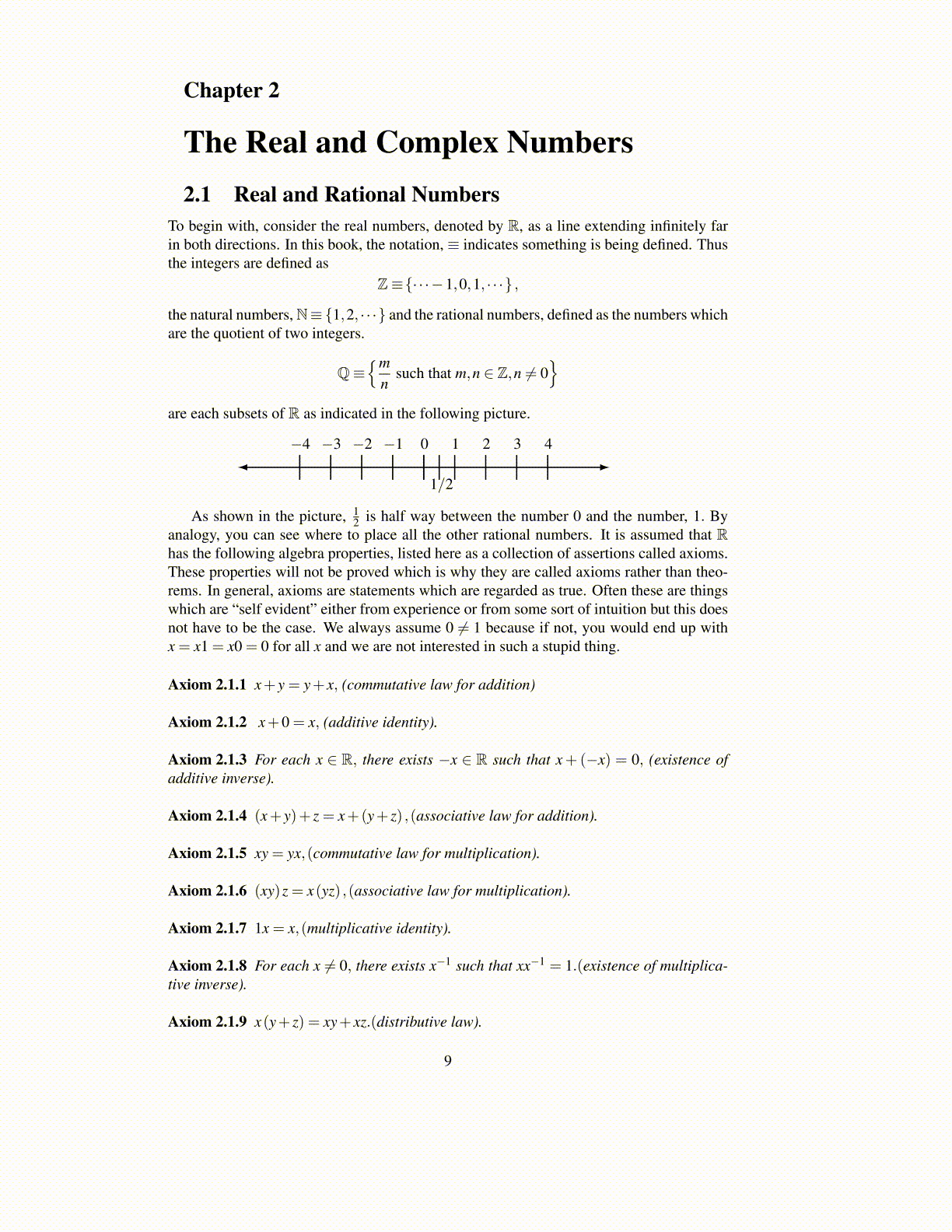
Chapter 2
The Real and Complex Numbers2.1 Real and Rational Numbers
To begin with, consider the real numbers, denoted by R, as a line extending infinitely farin both directions. In this book, the notation, ≡ indicates something is being defined. Thusthe integers are defined as
Z≡{·· ·−1,0,1, · · ·} ,
the natural numbers,N≡{1,2, · · ·} and the rational numbers, defined as the numbers whichare the quotient of two integers.
Q≡{m
nsuch that m,n ∈ Z,n ̸= 0
}are each subsets of R as indicated in the following picture.
0
1/2
1 2 3 4−1−2−3−4
As shown in the picture, 12 is half way between the number 0 and the number, 1. By
analogy, you can see where to place all the other rational numbers. It is assumed that Rhas the following algebra properties, listed here as a collection of assertions called axioms.These properties will not be proved which is why they are called axioms rather than theo-rems. In general, axioms are statements which are regarded as true. Often these are thingswhich are “self evident” either from experience or from some sort of intuition but this doesnot have to be the case. We always assume 0 ̸= 1 because if not, you would end up withx = x1 = x0 = 0 for all x and we are not interested in such a stupid thing.
Axiom 2.1.1 x+ y = y+ x, (commutative law for addition)
Axiom 2.1.2 x+0 = x, (additive identity).
Axiom 2.1.3 For each x ∈ R, there exists −x ∈ R such that x+(−x) = 0, (existence ofadditive inverse).
Axiom 2.1.4 (x+ y)+ z = x+(y+ z) ,(associative law for addition).
Axiom 2.1.5 xy = yx,(commutative law for multiplication).
Axiom 2.1.6 (xy)z = x(yz) ,(associative law for multiplication).
Axiom 2.1.7 1x = x,(multiplicative identity).
Axiom 2.1.8 For each x ̸= 0, there exists x−1 such that xx−1 = 1.(existence of multiplica-tive inverse).
Axiom 2.1.9 x(y+ z) = xy+ xz.(distributive law).
9